Forget about the busy canals of Amsterdam for a second. Now, picture a peaceful village tucked away in the Dutch countryside, so charming it feels like it came straight out of a fairytale. Think sparkling moats, cute houses with orange roofs, and old windmills spinning in the breeze.
This isn’t some fantasy; it’s Bourtange, a Dutch village shaped like a star, quietly nestled in the north of the Netherlands.
Bourtange is near the German border, in the province of Groningen, and it’s one of those hidden gems most people miss. It’s like travelling back in time, with every cobblestone telling a story. If you’re looking for a place that feels like a step back in time, this is it.
Contents
The History of this Star-Patterned Dutch Village
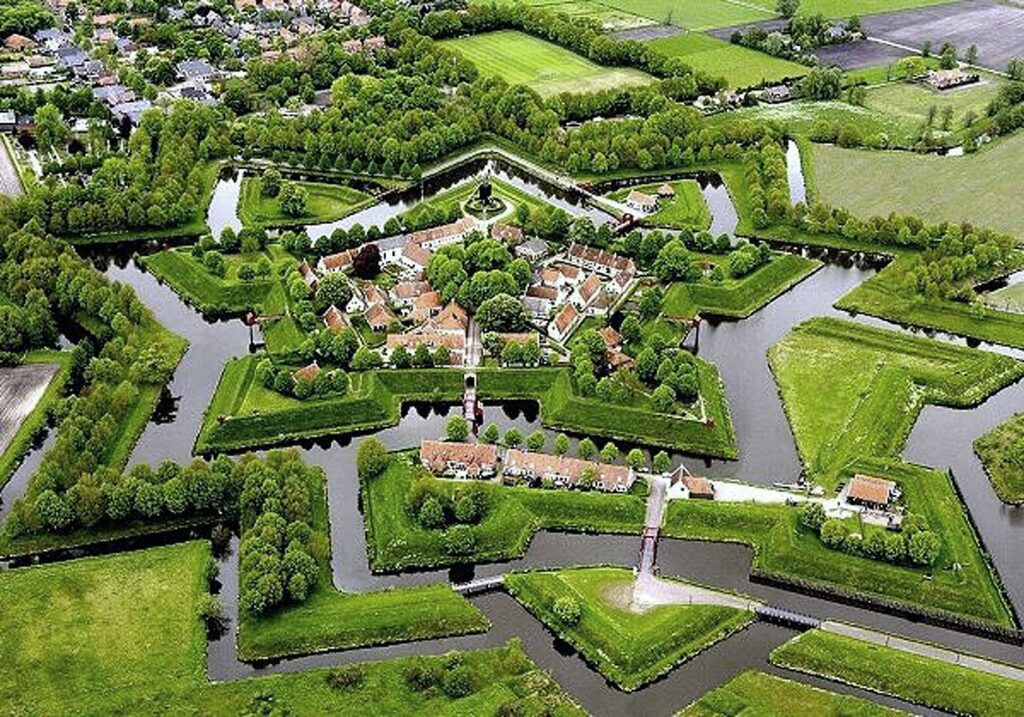
To really get Bourtange, you need to understand why it was built in the first place. The story goes back to the late 1500s, during the Eighty Years’ War, a brutal struggle where the Dutch fought to break free from Spanish rule.
At the time, the Spanish controlled the city of Groningen, and they relied on a key supply road that passed through a marshy area. This road, built on a sandy ridge (called a “tange” in Dutch), was vital for the Spanish. In 1593, the Dutch leader, William the Silent, decided to cut off this supply line by building a fort right on that ridge.
The design of the fort was a stroke of brilliance. Shaped like a five-pointed star, it was a cutting-edge military defense. The star-shaped bastions made sure there were no blind spots, so defenders could fire cannons in every direction. Plus, the surrounding marshes acted like a natural moat, keeping invaders at bay.
The plan worked. The fort successfully blocked the Spanish supply line, helping the Dutch reclaim Groningen in 1594. And nearly a century later, in 1672, it held up again, fending off a siege from a German army, proving it was nearly impossible to conquer.
Restoring an Overlooked European Wonderland
As military technology improved, star forts like Bourtange became less important. The marshes around it were drained for farming, which took away its natural defense. By 1851, the fort was no longer needed and was officially abandoned, turning into a small farming village instead.
Over the next hundred years, the once-proud fort started falling apart. The ramparts wore down, the moats filled up, and the buildings slowly crumbled. The village seemed to be fading away.
But in the 1960s, local officials decided to take on an ambitious project: bringing the fort back to life. Their goal was to restore Bourtange to how it looked in 1742, when it was at its peak.
The restoration was a huge effort that took almost 30 years to complete, wrapping up in 1992. They rebuilt the ramparts, re-dug the moats, and carefully reconstructed buildings using old maps and drawings.
Today, Bourtange is like a living museum, a perfectly preserved 18th-century village where about 50 people still live. It’s a beautiful example of historical preservation and a true hidden gem.
Exploring the Star-Patterned Dutch Village of Bourtange
Visiting Bourtange feels like stepping onto the set of a movie. The whole village is super walkable, and while you’ll need a ticket for the museums, exploring the fortress itself is totally free.
Walk the Ramparts
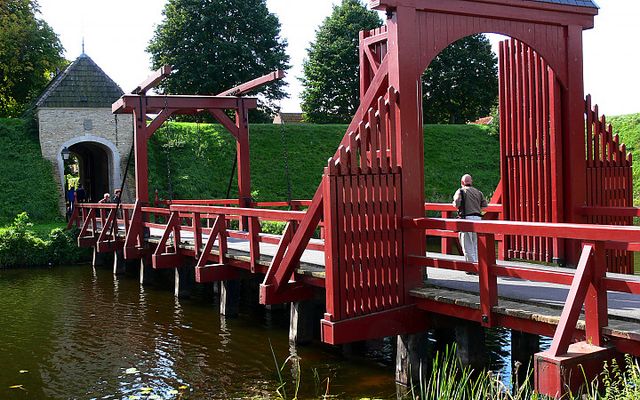
The first thing you’ve got to do is walk the star-shaped ramparts. A full loop takes about 30 minutes and offers the best views of the village. From up on the grassy earthworks, you can really take in the village’s unique design. You’ll see the cute houses, the central square, and the pretty moats reflecting the sky.
As you hop from bastion to bastion, you’ll cross red wooden bridges and spot old cannons pointing out toward the horizon. Don’t forget to check out the reconstructed wooden windmill; it’s a classic Dutch feature that used to serve the village.
Discover the Heart of the Village

All paths lead to the Marktplein, the village’s central square. Shaded by 300-year-old linden trees, this cobblestone square is the heart of the village. Here, you’ll find cozy cafes, artisan shops, and restaurants serving traditional Dutch dishes.
While you’re there, keep an eye out for a strange wooden object that looks like modern art. It’s actually a replica of an old torture device, the wooden horse, reminding visitors of the fort’s military past.
A Journey Through Five Museums
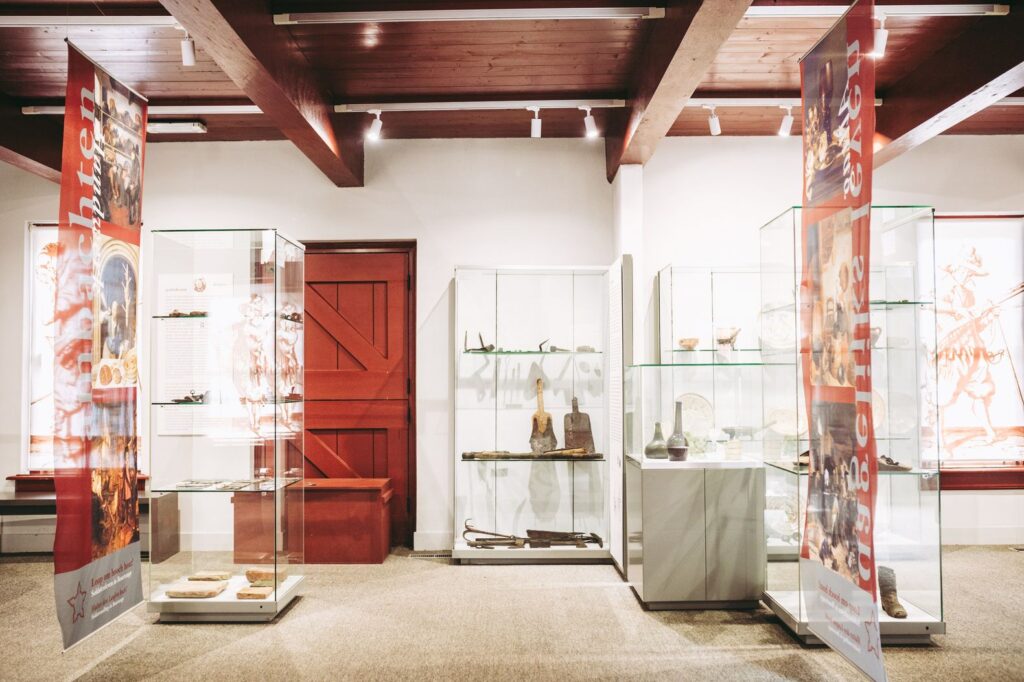
If you want to dive deeper into Bourtange’s history, one ticket gets you into all five of the village’s museums:
- Museum De Baracquen: Step inside a recreated 18th-century soldiers’ barracks to see how the troops lived, ate, and slept. Plus, there are fascinating artifacts from the fort’s restoration.
- The Captain’s House: A beautifully restored officer’s home from 1661, showing a more comfortable side of military life.
- The Synagogue: This small synagogue, built in 1842, now honors the Jewish community that once thrived here, offering a touching tribute to those who were deported during WWII.
- Terra Mora: This exhibit explores the fort’s history and the surrounding marshlands that were crucial to its defense.
- The New Gunpowder House: See where up to 45,000 pounds of gunpowder were stored and catch a short film about the fortress’s past and present.
Experience Living History
Bourtange really comes alive during its special events. If you’re there in June, you might catch the Battle of Bourtange, one of the largest historical reenactments in the Netherlands, with soldiers in costume and mock battles. From April to September, you can also watch live cannon firing every Sunday afternoon.
Where to Stay and Eat in the Fortress
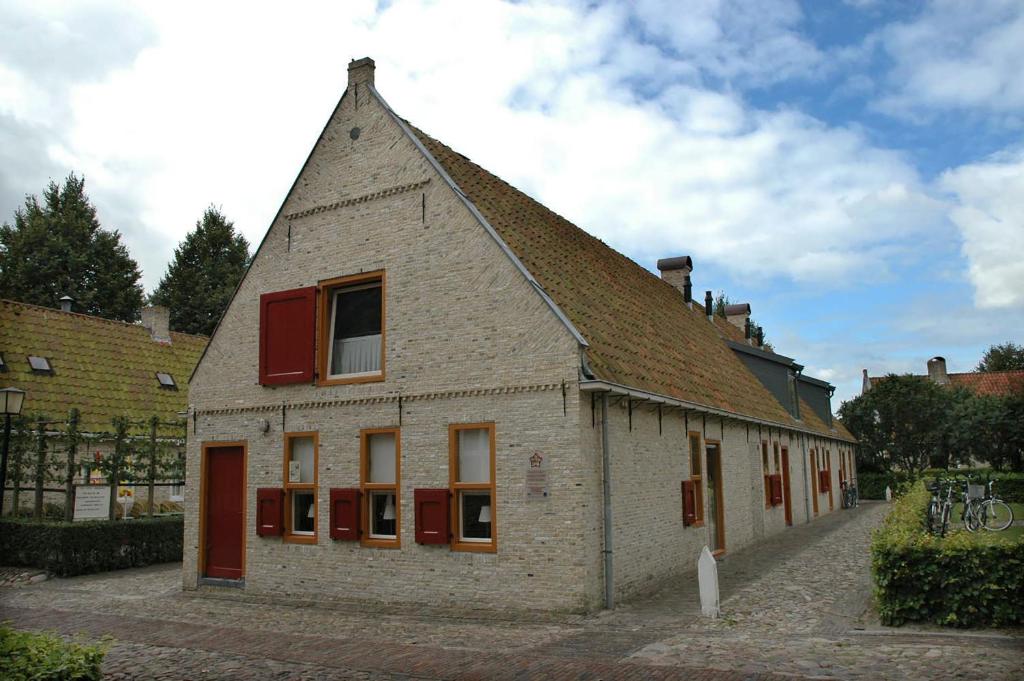
For the full Bourtange experience, why not stay overnight? Hotel Vesting Bourtange is the only hotel inside the fortress, with rooms in former military buildings like the soldiers’ barracks. Waking up in a 17th-century fortress surrounded by mist is unforgettable.
For food, head to the restaurants around the Marktplein. Both ‘s Lands Huys and ‘t Oal Kroegie serve up delicious Dutch dishes and have lovely terrace seating under the trees. And don’t forget to try a local Bourtange beer, brewed with water from the original marsh!
How to Reach This Overlooked European Wonderland
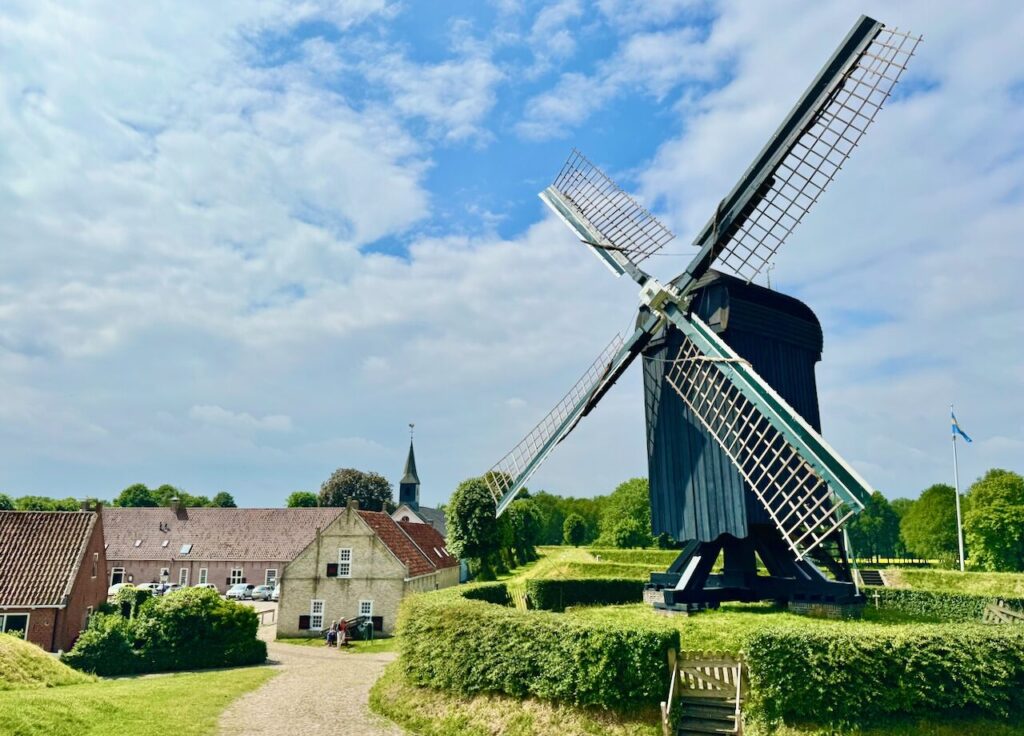
Getting to this hidden European gem, Bourtange, might seem tricky, but it’s actually pretty straightforward with a little planning.
From Groningen: The easiest way is by car. It’s just under an hour’s drive (about 37 miles or 59 km). If you’re using public transport, take a train to Winschoten and then catch a bus to Bourtange. The whole trip takes around an hour and a half.
From Amsterdam: Driving from Amsterdam takes just under three hours. If you prefer the train, just take one to Groningen (about 2.5 hours) and then follow the directions from there.
For international travelers, flying into Amsterdam’s Schiphol Airport (AMS) is your best bet. You might want to spend a night or two in Groningen first; It’s a lively university city that’s less crowded than Amsterdam, before heading out to Bourtange.
A Trip You’ll Always Remember
Bourtange is a portal to another time. You can walk along the same walls that protected Dutch soldiers hundreds of years ago and feel the quiet strength of a village that wouldn’t be forgotten.
If you’re done with the usual tourist crowds and want something truly special, head to this amazing star-shaped village. It’s a hidden European gem that shows the most magical places are often the ones right under your nose.